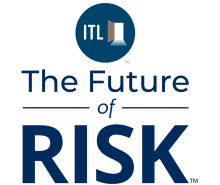With mobile ordering, digital banking, and payments, technology has moved life into hyperdrive, and this expectancy trickles down to all other areas, including more traditional services like insurance.
According to LIMRA, the U.S. individual life insurance premium set a record last year, with total new annualized premium increasing by 3%, but the sector is often criticized for its slow pace and limited digital presence. Manual and lengthy processes add to the natural complexity of underwriting. To gain a competitive edge, build customer loyalty and trust, and reach underinsured demographics, insurers must recognize one truth – underwriting is in urgent need of transformation.
Meeting modern expectations with not-so-modern technology
Too many insurance companies still rely on legacy technology to complete core functions. This technology cannot keep up with the demands of a modern industry, as it lacks the flexibility and scalability that are essential for growth. As insurtech continues to raise the bar with modern solutions, traditional insurance organizations are falling behind. This gap is monumental and will continue to grow if left unchecked. Legacy workflows make underwriting an arduous process and limit the speed of customer support and policy fulfillment. This may force customers to abandon their transactions altogether or to look elsewhere, damaging a firm's bottom line.
Technology to support insurance enters an efficient, client-focused era
According to the 2025 Insurance Barometer, 74 million Americans need life insurance, while 22% of individuals who do not own insurance stated that they were not sure how much they needed or had a clear understanding of what to buy. 41% of U.S. adults stated they are "somewhat or not at all knowledgeable about life insurance."
With the current market uncertainty, consumers are feeling pressure to do more to protect not only their own financial security but also thinking of their loved ones and shielding them from future financial struggles. Yet, many may be unsure of how to move forward.
This is where agents, advisors, and distributors play a crucial role in educating prospects and customers. However, the science of underwriting is not straightforward, and finding and securing the right policy for a customer can be complex. Various factors go into play, and the lengthy back and forth process can leave end customers more perplexed and, even worse, cause them to abandon the process. Digitized solutions can support intermediaries in navigating the complexities of the underwriting process by helping them inform customers early in the cycle what policies they are likely to be approved for, taking the process from weeks to minutes. AI-driven predictive models can also help distributors and agents identify and provide policy recommendations best suited to each individual's needs, which can further streamline the process and meet customer demands for greater personalization. AI also enhances transparency in underwriting by evaluating decisions in real time as data is gathered. This accelerates approvals while making the process feel more personalized and intuitive, helping build trust and improve customer satisfaction.
To enable AI's full potential, robust, structured, and unified data plays a critical role. While carriers and distributors host a mountain of client data, it is often not used strategically to help drive business growth. For example, customers looking to adjust life insurance or annuity products to meet their evolving needs often face the frustrating task of starting from scratch and being required to re-enter their information, a tedious and off-putting task. This pain point can be alleviated by leveraging digitally led solutions that facilitate automation. Automation provides the ability for forms and documents to be auto-filled based on a customer's past profile and stored data, ultimately saving individuals' time and avoiding any dissatisfaction due to repetitive tasks.
Mind the gap – personalized approach to reach underinsured demographics
Data can also play a key role in helping the L&A sector to reach new customers. According to the 2025 Barometer survey, 43% of women indicate "they need (or need more) life insurance." The gender disparity in life insurance coverage persists, and while there has been progress over the years, closing the gap should remain a priority.
With no two financial journeys the same, each consumer's financial decisions and trigger points on what they need and why they need it are going to differ. The L&A sector has the opportunity to meet the diverse needs of various demographics. By using predictive analytics, firms can leverage new insights to help create tailored products as well as personalized distribution strategies that align with the specific needs and expectations of new market segments.
Beyond customer expectations – the talent crunch
It's no secret that the insurance and annuities industry is currently facing a challenge due to an aging workforce, and this is promoting executives to concentrate on attracting new talent to fill this gap. However, this task is more challenging than it might seem, as the sector struggles with a branding issue and is often perceived as outdated, primarily due to the underuse of innovative technology solutions. It is crucial to move away from this stereotype and modernize the industry to avoid falling behind, especially considering that there are approximately 70 million members of Generation Z in the U.S. alone. As they enter the workforce, this cohort has a strong demand for technology.
As digital natives, they expect modern solutions and are unlikely to compromise on these requirements. Recognizing this reality and making a concerted effort to advance digital initiatives should be a priority for executive leaders. Equipping current teams with digital tools not only enhances efficiency but also serves as a strong selling point for attracting talent that is focused on modern solutions.
Technology to accelerate underwriting needs
Overall, traditional processes, including underwriting and customer service interactions, are going to inhibit growth if they are not improved to fit the demands of today's speed-driven world. However, technology is quickly reshaping this space by accelerating workflows such as underwriting, distribution, and customer service using predictive analysis and automation.
Digital transformation is going to be the central factor affecting insurance firms' success in the coming years. And much like the expectations of today's end customers, the key word is speed, as those that embrace technology the quickest will take the lead.






